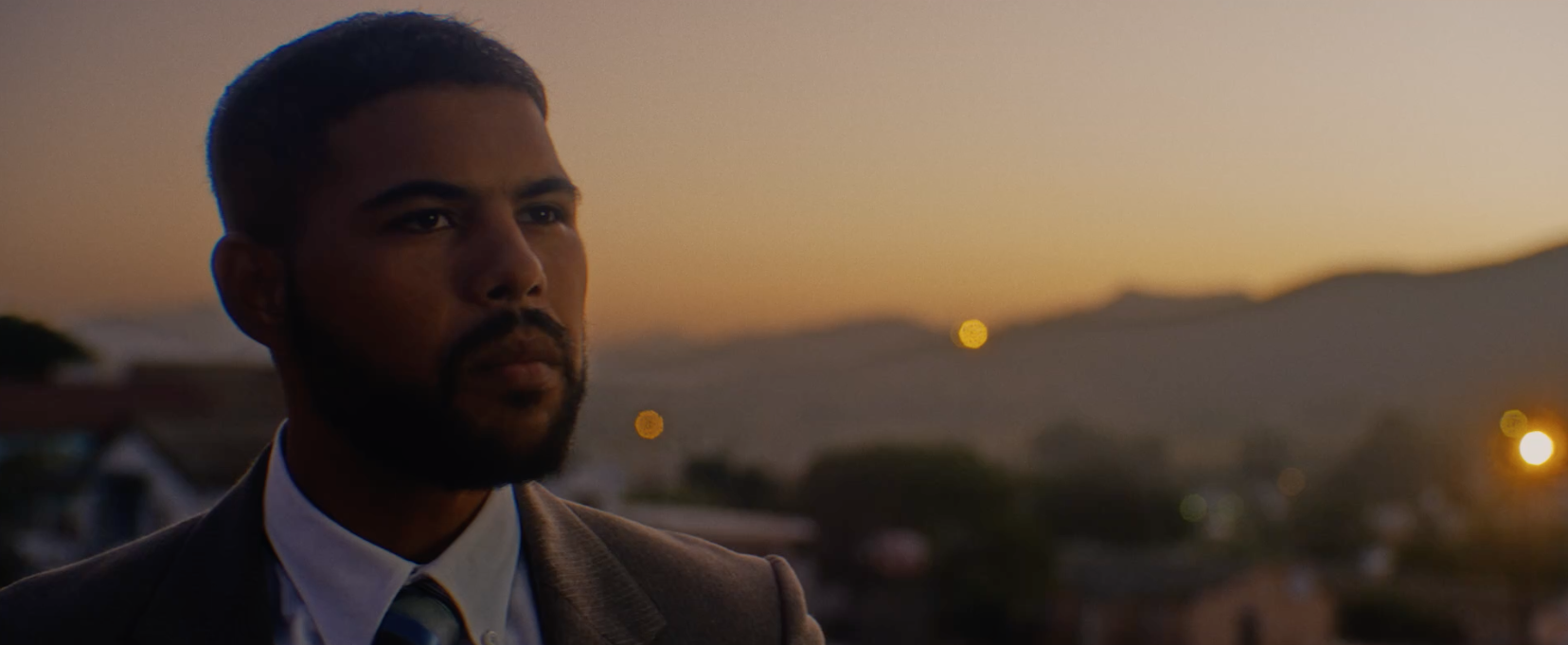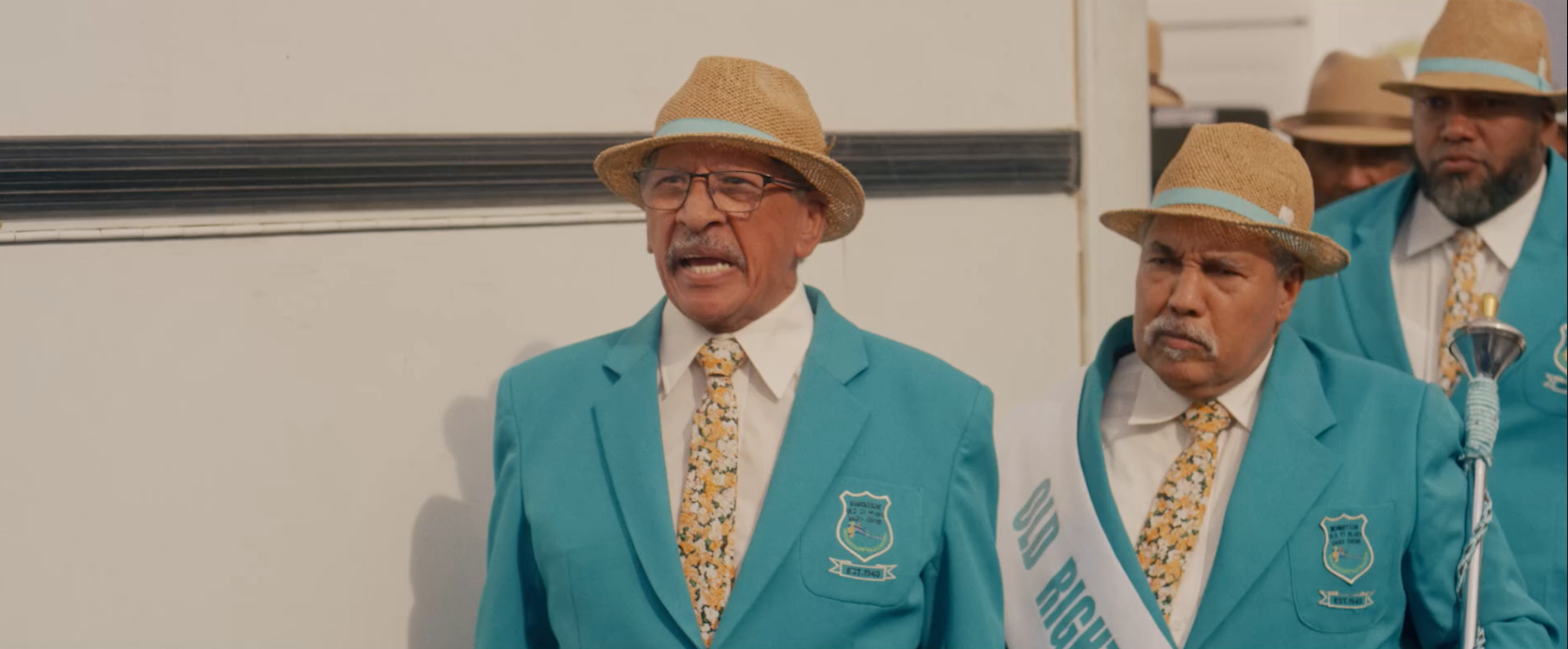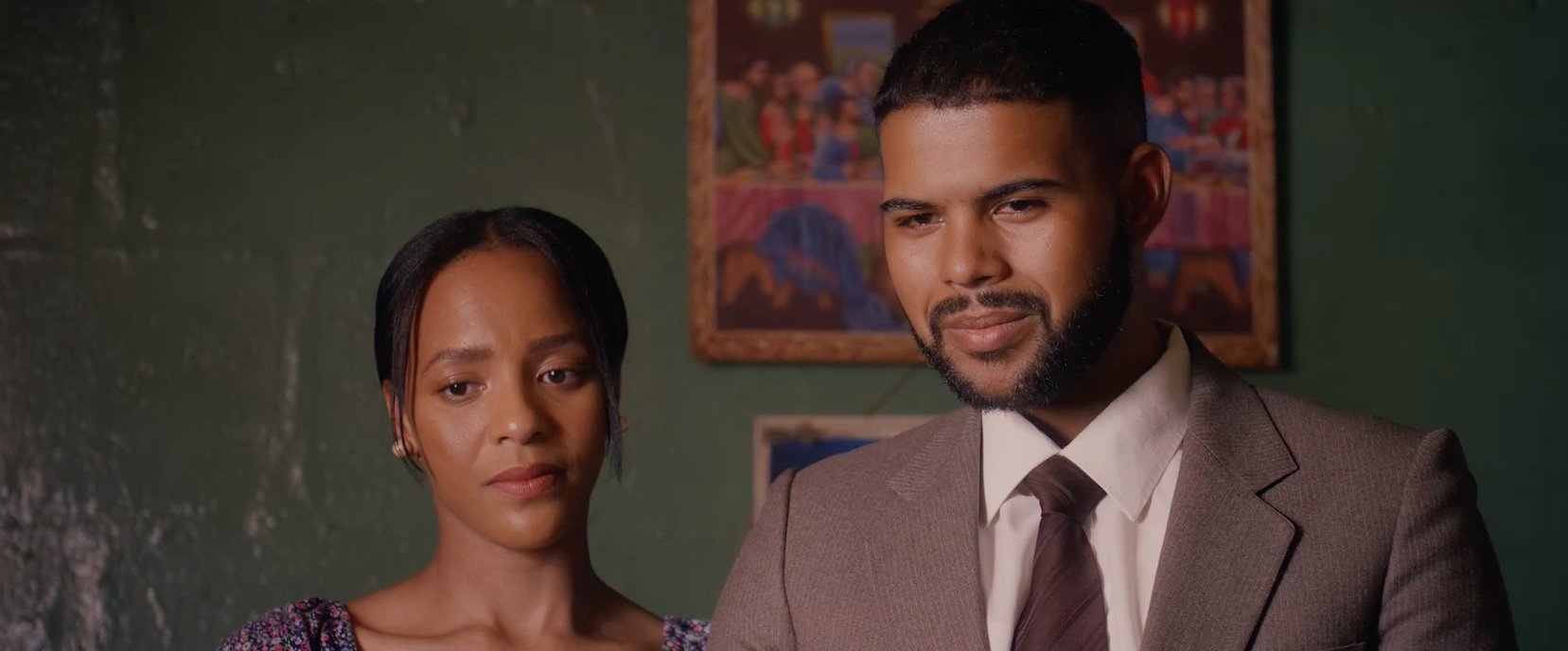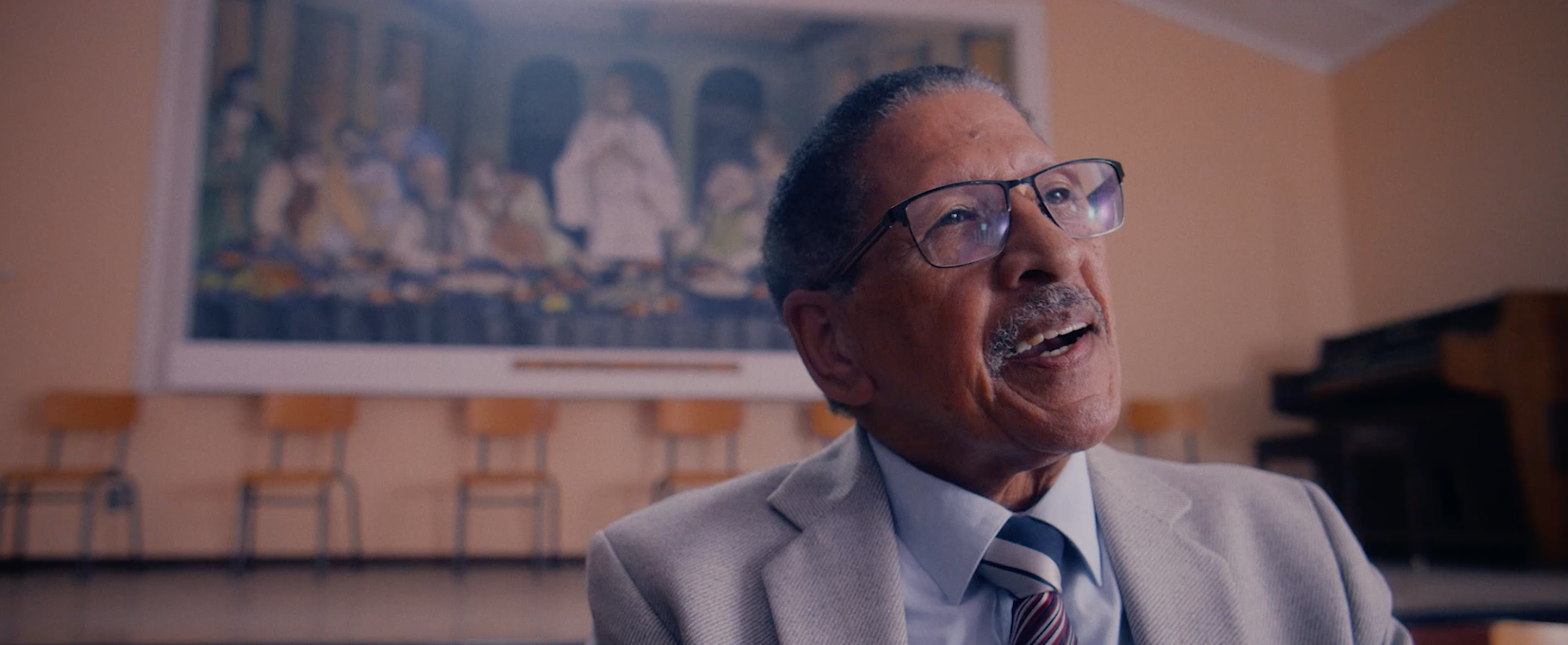




Old Righteous Blues is a truly South African film rooted in the world of the Cape Christmas Choir brigades
It’s a Romeo and Juliet story set in the Boland, a gripping drama about a community torn in two over an old feud, and a truly South African film that shines the spotlight on a national cultural treasure: the Western Cape Christmas Choirs. This is Old Righteous Blues, the must-see Silwerskerm Festival feature film, with a large and impressive cast that is set to have audiences around the world applauding.
Old Righteous Blues was filmed in beautiful Robertson and tells the story of Hantjie, an ambitious young man with a burning desire to become the drum major of his Christmas choir. Unfortunately, the choir’s rigid leaders who cling to the past, do not approve. To further complicate matters the love of Hantjie’s life, Risi, is the daughter of the leader of the hated opposition choir.
Ayden Croy delivers a captivating performance as Hantjie and Megan Saayman shines as his beloved Risi. Old Righeous Blues also stars up-and-coming stars like Joshwin Dyson and Stefan Erasmus. The cast is rounded out by formidable veteran actors such as Kevin Smith, Simon Bruinders, Euodia Sampson and Ivan Abrahams.
Old Righteous Blues is all the more special for the way it involved the people of Robertson – as extras, advisors or for behind-the-scenes assistance. It is not only a uniquely South African film; it’s also Robertson’s film.
Screenwriter Carol Shore, ex head writer of the soap opera Muhvango who now lives in Robertson, and the director of Old Righteous Blues, Muneera Sallies, shed more light on the film in a Q&A session.
- When and how was the seed planted for Old Righteous Blues?
Carol: “I first became acquainted with the Christmas choirs when I moved from Johannesburg to the Western Cape a long time ago. The tradition of marching through the streets while making music on Christmas Eve was an exciting new experience for me. So are the choir competitions in the warm months of February and March. As a screenwriter and filmmaker, this stimulated me because I had never encountered this rich cultural tradition on the big or small screen.
My research started with the idea that it would be an important documentary. This was in the time before internet searches, when in-person interviews was the only way. That’s how I heard about a bitter old feud between choirs over leadership and musical styles. This affected Robertson’s people deeply and drove a wedge between friends and family – people who were once united by the same choir. A different story began to unfold, which was better suited to a film.”
- Tell us more about the people of Robertson.
Carol: “I am privileged to have walked a long road with the Old Saints Christmas Choir. They are part of a community characterised by poverty and unemployment with few prospects for young people. Yet, the choir has been creating the opportunity to be part of something special since 1947.”
- How did you go about involving the people of Robertson in Old Righteous Blues?
Muneera: “When you tell the story of a specific community, it’s important to present it as authentically as possible and my ethos is to always serve the community through it. Whether it’s through job creation, skills transferal or just the energy that the film brings.
We had numerous discussions with the community beforehand in which I shared my vision. From the beginning their contribution was enormous.
The choir members in the area played a decisive role with the choreography of the marching and the choral skills needed for Old Righteous Blues.
Behind the scenes, Robertson’s residents also took care of things like security and catering, and some helped with lighting and other requirement on set.
We had little rehearsal time and everyone was amazing. They sometimes found the language on set amusing. It was precious to see the children call out ‘one, two three, action’ and ‘cut’ at the end.”
Carol: “It was an ambitious project in terms of scale and we certainly couldn’t have done it without the cooperation of the locals. Ultimately, I believe it was an incredibly bonding and exciting experience for all, on both sides of the camera. There was a sense of pride in telling a story unique to the area.”
- Muneera, with all the extras on set you had to deal with a large group of people. How did you approach and manage it?
Muneera: “Goodness, it was challenging but also fantastic. To have such a big crowd with no film experience on set – who have no idea what it takes to shoot a scene – was a big deal. In retrospect, it was madness, but there’s also so much power and magic in the raw honesty that this process delivers. You can’t do it any other way.
I strongly believe that treating each person with kindness and respect, and ensuring they understand your goals, no matter how big or small their role, makes everything easier. We joked and laughed a lot on set.”
- What was your biggest challenge on set?
Muneera: “To make a film, you spend a lot of time problem solving. Our biggest challenge was working closely with the choir. Remember, they’re ordinary people with their own lives and routines – not actors or filmmakers. We were outsiders who overturned their daily routines. If there was a big rugby match on a Friday night or Saturday morning, we had to – as it should – adjust our schedules. We frequently had to make new plans out of the blue and believe me, there was often a plan B and C. We actually went through the whole alphabet, all the way to Z. But it was worth it.”
Old Righteous Blues is produced by The Ergo Company and Seashore Films with Dumi Gumbi, Cati Weinek and Carol Shore at the helm.
Director Muneera Sallies joined the industry at the age of 15 as an actor. Recent achievements include the popular drama series Melody and the feature film Twisted Christmas.
Old Righteous Blues screens at the Silwerskerm Festival on Wednesday 23 August at 20:00. Keep an eye on the DStv website for future screenings on DStv BoxOffice.
